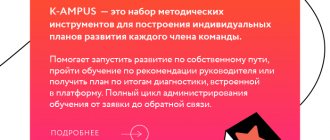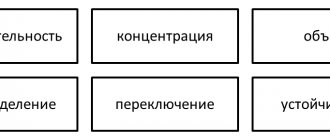Involuntary attention is a variation of attention that occurs due to the influence of a stimulus on the analyzers and consists in reproducing an image, phenomenon, object without the application of volitional effort. This variation of attention is considered its most elementary type, also characteristic of animals. Involuntary attention is observed even in infants, but at first it is unstable and relatively limited in volume. It arises suddenly, autonomously from consciousness, regardless of the type of activity performed at that moment under the influence of various stimuli affecting the body’s analyzer.
Types of attention
Let's consider the main types of attention. This
- natural and socially conditioned attention,
- direct and indirect attention,
- involuntary and voluntary attention,
- sensory and intellectual attention.
Natural attention
given to a person from the day of his birth as an innate ability to selectively respond to certain external or internal stimuli that carry elements of information novelty. The main mechanism that ensures the functioning of such attention is called the orienting reflex.
Socially conditioned attention
develops as a result of life experience, training and upbringing, is associated with volitional regulation of behavior, with a conscious selective response to objects.
Direct attention
is not controlled by anything other than the object to which it is directed and which corresponds to the actual interests and needs of a person.
Vicarious attention
regulated using special means, such as gestures, words, pointing signs, objects.
In fact, it is difficult to force ourselves to be attentive to something with which nothing can be done, which does not cause our external or internal activity. But there are objects and phenomena that seem to attract attention to themselves, sometimes even against our wishes. In one case, you need to force yourself to be attentive, and in the other, the object itself provides attention, forces you to look at yourself, listen, etc.
Here we can talk about two different types of attention - involuntary and voluntary attention
. Involuntary (passive) attention, in the occurrence of which our intention does not take part, and voluntary (active), which arises thanks to our intention, as a result of our application of willpower. Thus, what involuntary attention is directed to is itself remembered; what needs to be remembered requires voluntary attention.
What is attention in psychology?
The most popular definitions:
Attention is the selective focus of perception on a particular object.
A change in attention is expressed in a change in the experience of the degree of clarity and distinctness of the content that is the subject of human activity.
Attention finds expression in a person’s relationship to an object. Behind attention are often the interests and needs, attitudes and orientation of a person, and other psychological characteristics of the individual. This, first of all, causes a change in attitude towards the object, expressed by attention - its awareness. The reasons for attention to a particular object are indicated by its properties and qualities, taken in their relation to the subject.
Attention determines the successful orientation of the subject in the surrounding world and ensures a more complete and clear reflection of it in the psyche. The object of attention appears in the center of our consciousness, everything else is perceived weakly and indistinctly, but the direction of our attention can change.
Attention does not represent an independent mental process, since it cannot manifest itself outside of other processes. We listen carefully or inattentively, look, think, do. Thus, attention is only a property of various mental processes.
Attention is a special state of consciousness, thanks to which the subject directs and focuses cognitive processes for a more complete and clear reflection of reality. Attention is associated with all sensory and intellectual processes. This connection is most noticeable in sensations and perceptions.
Characteristics of attention:
- Sustainability is the duration of attention being drawn to the same object or task.
- Concentration is determined by the unity of two important factors - an increase in signal intensity with a limited field of perception.
- Distribution is understood as a person’s subjectively experienced ability to hold a certain number of heterogeneous objects in the center of attention at the same time .
- Switchability is determined by the speed of transition from one type of activity to another.
Involuntary attention
Involuntary attention is a lower form of attention that arises as a result of the influence of a stimulus on any of the analyzers. It is formed according to the law of the orientation reflex and is common to humans and animals.
The occurrence of involuntary attention can be caused by the peculiarity of the influencing stimulus, and also be determined by the correspondence of these stimuli to past experience or the mental state of a person.
Sometimes involuntary attention can be useful, both at work and at home; it gives us the opportunity to promptly identify the appearance of an irritant and take the necessary measures, and facilitates inclusion in habitual activities.
But at the same time, involuntary attention can have a negative impact on the success of the activity being performed, distracting us from the main thing in the task at hand, reducing the productivity of work in general. For example, unusual noise, shouting and flashing lights during work distract our attention and make it difficult to concentrate.
Causes of involuntary attention
The causes of involuntary attention may be:
- Unexpected stimulus.
- Relative strength of the stimulus.
- Novelty of the stimulus.
- Moving objects. T. Ribot singled out exactly this factor, believing that as a result of purposeful activation of movements, concentration and increased attention on the subject occurs.
- Contrast of objects or phenomena.
- The internal state of a person.
The French psychologist T. Ribot wrote that the nature of involuntary attention is rooted in the deep recesses of our being. The direction of a given person's involuntary attention reveals his character, or at least his aspirations.
Based on this sign, we can draw a conclusion regarding a given person that he is a frivolous, banal, limited person, or a sincere and deep person. A beautiful landscape attracts the artist’s attention, affecting his aesthetic sense, while a local resident sees only something ordinary in the same landscape.
Voluntary attention
If you tell me what you pay attention to, then I will be able to determine who you are: a pragmatist or a highly spiritual person. Here we are talking about a different type of attention - voluntary, intentional, active.
If animals have involuntary attention, then voluntary attention is possible only in humans, and it arose thanks to conscious labor activity. To achieve a certain goal, a person has to do not only what is in itself interesting, pleasant, entertaining; he has to do not only what he wants, but also what is necessary.
Voluntary attention, more complex and unique to humans, is formed in the learning process: at home, at school, at work. It is characterized by the fact that it is directed to an object under the influence of our intention and goal. Everything is simple here, you need to set a goal: “I need to be attentive, and I will force myself to be attentive, no matter what,” and persistently work towards this goal.
Physiological mechanism of voluntary attention
The physiological mechanism of voluntary attention is the focus of optimal excitation in the cerebral cortex, supported by signals coming from the second signaling system. Hence, the role of the word of the parents or teacher in the formation of voluntary attention in the child is obvious.
The emergence of voluntary attention in humans is historically associated with the labor process, because Without managing your attention, it is impossible to carry out conscious and planned activities.
Psychological feature of voluntary attention
A psychological feature of voluntary attention is that it is accompanied by the experience of greater or lesser volitional effort and tension, and prolonged maintenance of voluntary attention causes fatigue, often even greater than physical tension.
It is useful to alternate strong concentration with less strenuous work, by switching to easier or more interesting activities, or by arousing a strong interest in an activity that requires intense attention.
A person makes a significant effort of will, concentrates his attention, understands the content necessary for himself and then, without volitional tension, carefully follows the material being studied.
His attention now becomes secondarily involuntary, or post-voluntary. It will significantly facilitate the process of assimilation of knowledge and prevent the development of fatigue.
Exercises to develop attention for preschoolers
In games for attentiveness for preschool children, emphasis should be placed on the formation of voluntary attention. Parents and teachers need to take into account the psychological and age characteristics of the child, consistently introduce him to new material, and rely on existing knowledge and skills.
Exercise No. 1
Place any object in front of the child - it could be a plush toy or some kind of decorative figurine. Ask him to carefully examine the item for a few minutes, then put the item away. The child should close his eyes and describe the object in as much detail as possible. Then return the item to its place and ask the child to name the “missing” details.
Exercise No. 2
Find a picture that shows several pairs of different objects. One item must be without a pair. Show the picture to your child and ask him to find the item. Here is an example with the heroes of Umnasia:
Exercise #3
“Name the color.” Take a piece of paper and write the names of the colors with markers or pencils that do not correspond to them: for example, the word “red” in black, and the word “yellow” in blue. Show your child what you have done and ask him to name the colors in which the words are written. The child should focus on the color of the font, not on the word for the color.
You can diversify the game and add one word, the color of which will correspond to its meaning (for example, write “green” with a green felt-tip pen). Ask your child to find it among the “wrong” words.
Exercise #4
Show your child a picture that shows several different objects divided into groups: for example, five pots of different colors and seven teapots of different shapes and different colors. Ask your child to carefully study the picture and count how many pots and how many teapots he sees. Here is a good example (albeit, instead of kettles and pots there are cats and dogs):
Exercise #5
Show your child two identical images with small and subtle differences. Ask him to find any discrepancies. You can start right now with this picture:
Externally and internally focused attention
Attention can be paid either to objects of the external world, or to thoughts, feelings, memories. On this basis, externally and internally directed attention is distinguished.
If, while performing a task, memories pop up in a person’s memory that distract him from the main activity, this will be involuntary internally directed attention. Sometimes involuntary, but intense internally directed attention can cause a person to be inattentive.
Voluntary attention singles out from the entire mass of phenomena acting on analyzers only that part of it that should occupy a central place in human activity. However, this part is not always the same in volume. It is different in the same circumstances for different people and for the same person in different conditions.
Application direction dependent
Depending on the focus (features of the object of attention, the nature of the action), internal and external applications are distinguished.
External (sensory, perceptual) is focused on objects and phenomena of the external world, for example, on certain objects, work, etc. This type of attention is necessary for a person to successfully perceive the world around him. It enhances the sensitivity of the senses, speeds up the process of perception, promoting clarity and clarity of display. External concentration is especially expressive in conditions when a person not only looks, but also looks closely, not only listens, but also listens. This is accompanied by appropriate posture of the body, movements of the head, eyes, etc.
We recommend that you read: Why should a person undergo personal growth training for their own development?
Unlike external, internal concentration is focused not on the objects or phenomena of the external world themselves, but on their images. It is aimed at the inner world of a person, for example, at his thinking, needs, interests, experiences, etc. It is associated with self-awareness and reflection. Intellectual, emotional and volitional development of a person is impossible without internal attention. It is often accompanied by unconscious movements of the lips, gestures, unintentional drawing, etc. In human activity, internal and external alternate , inhibiting each other. This is due to the fact that it is difficult for a person to focus on his internal problems and at the same time carefully perform some complex activity. By origin, internal attention arises later than external attention.
Volitional regulation of attention
Involuntary attention is not associated with the participation of the will, but voluntary attention necessarily includes volitional regulation. Involuntary attention does not require effort in order to maintain and focus attention on something for a certain time, but voluntary attention requires this.
Finally, voluntary attention, in contrast to involuntary attention, is usually associated with a struggle of motives or impulses, the presence of strong, oppositely directed and competing interests, each of which in itself is capable of attracting and maintaining attention. In this case, a person makes a conscious choice of goal and, through an effort of will, suppresses one of the interests, directing all his attention to satisfying the other.









